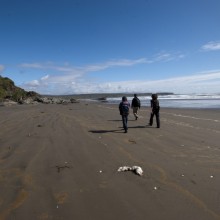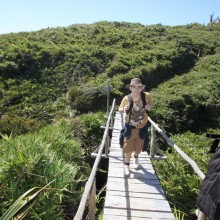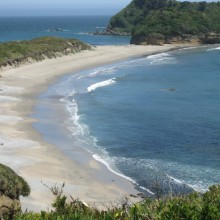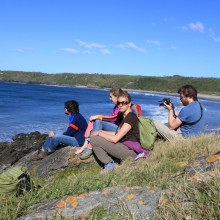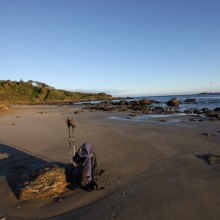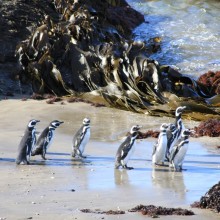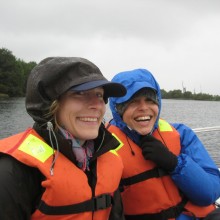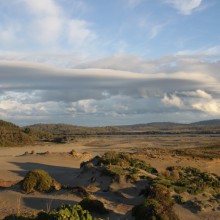‘’On the western side of the island are two excellent treks with wonderful coastal scenery of sandy beaches and estuarine lagoons set before a backdrop of densely forested hills’’. (Lonely Planet ‘Trekking in the Patagonian Andes’)
The Parque Nacional de Chiloé was created in 1982, has a surface of 42.567 hectares (105.185 acres) and is divided in 6 areas. Your guide will take you into the northern part called ‘Chepu’.
32 kilometers from the city of Ancud on the west coast is the tiny village of Chepu where this 3-day trek starts. A boat takes us to the other side of the Chepu river to the beginning of the ‘Sendero de Chile’, sector Chepu-Refugio Río Lar.
The variety of scenery makes this hike so attractive, we’ll walk on farmland, along different beaches, through dense forest and beside marshland.
Program
Day 1
The first part of the hike takes us to the privately owned nature preserve of Ahuenco. A colony of Magellan and Humboldt penguins nest here every year between October and April. Important! To get to the observation hut and see the penguins it has to be low tide. This changes every day and sometimes the tides have their own way and it is impossible to cross the beach.
On the beach of Ahuenco we’ll eat our pick nick lunch, rest and enjoy the area before heading for the refuge of the National Park where we’ll spend 2 nights.
The second part of the hike takes us along the beach of ‘Tongoy’ where once people looked for gold in the little streams and searched for semi-precious stones. The Darwin fox (Lycalopex fulvipes) roams this area as well as the second smallest deer in the world, the Pudu (Pudu pudu).
Before nightfall we arrive at the refuge of CONAF (National Parks and forestry department) at ‘Río Lar’. Your guide will make dinner with local products such as native potatoes, fish or shellfish, algae, kelp and native berries.
Day 2
We´ll spend the whole day in the National Park
Activities in the park:
take in the beauty of the place
listen to the sounds of birds, the crashing of the waves and the wind in the trees
try to catch a fish or gather some clams and abalones
relax, read a book or just take time to reflect
Day 3
Return to Chepu
Pick nick lunch in Ahuenco
Short film on the hike to Ahuenco and Parque Nacional Chiloé
What to bring (compulsory)
- hiking boots that are robust (for strong ankle support) but have a flexible midsole with an insole that supports the arch and heel.
waterproof jacket and over-trousers
sleeping bag
backpack with liner (waterproof)
water bottle (minimum 2 liters/ 0.5 US gal)
warm clothes (warm hat, sweater or fleece, thermal underwear and socks, fast drying T-shirt or shirt)
sun hat
toilet paper
What else to bring (recommended)
gaiters
sunglasses
fast drying towel
bag liner/ inner sheet
sandals or slippers
Beside the compulsory and recommended items you can bring all the other necessities that you need like toiletries, pocket knife, camera, binoculars, GPS, torch or flashlight, extra snacks, etc.
Safety and health information
Your guide:
-has an up to date first-aid training and carries a first-aid kit
-is at all times in contact with the office of TravelChiloé through VHF radio in case of a serious emergency where evacuation is needed, there is no cellular phone signal on the whole trek
-follows the safety protocol for trekking and excursion guides as set by the Chilean standards Nch. 2985 of 2006 and is officially registered at the department of tourism (Nº3469)
-prepares your food on the trek but does NOT carry it, all the food is equally carried by all the participants of the trek
-carries a water purifier
General information and recommendations
The hike is 30 kilometers (18.6 miles) long two-ways on mostly flat and softly hilly terrain.
In the south of Chile during the hottest summer months (January till half February) there can be horseflies. They can be a nuisance to some people but your guide can give you a sunhat with a net.
It is recommended that participants of this trek have previous experience with hiking whilst carrying a 3-day stocked backpack.

